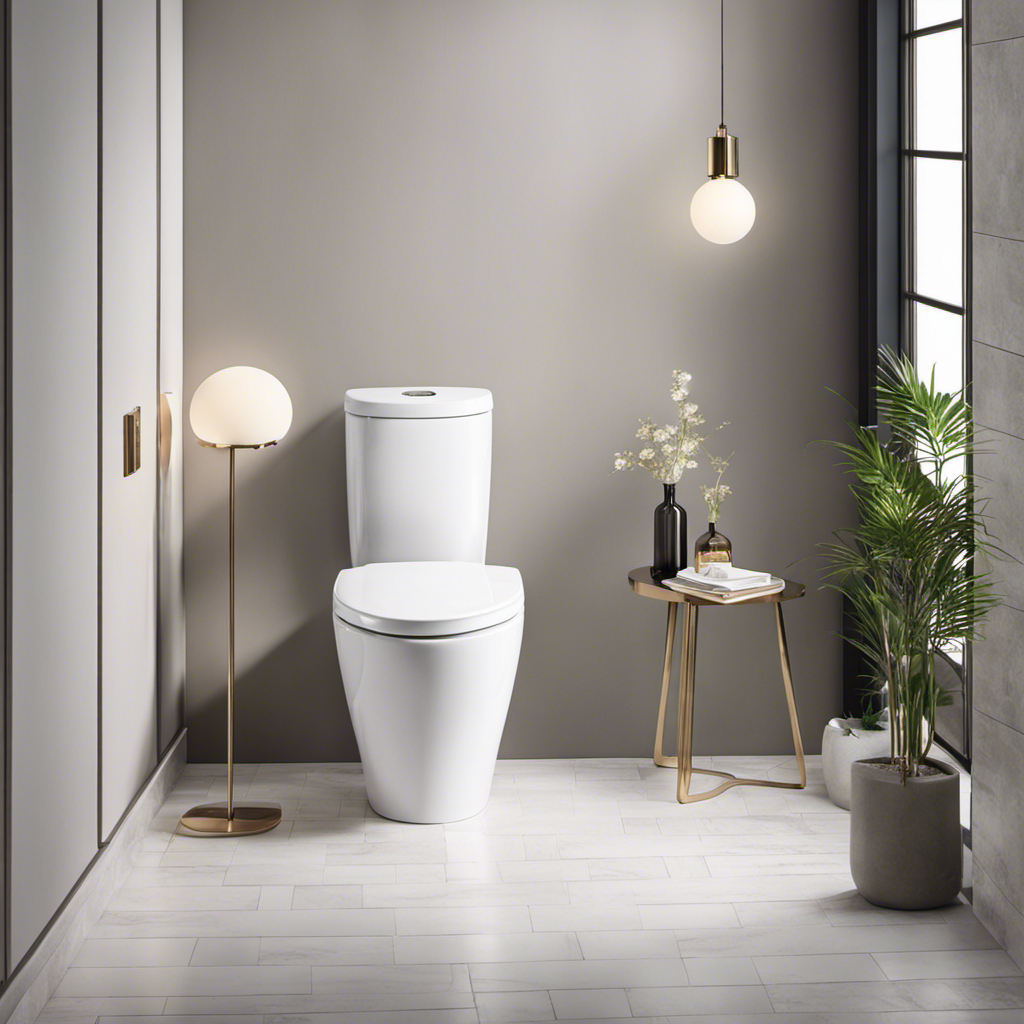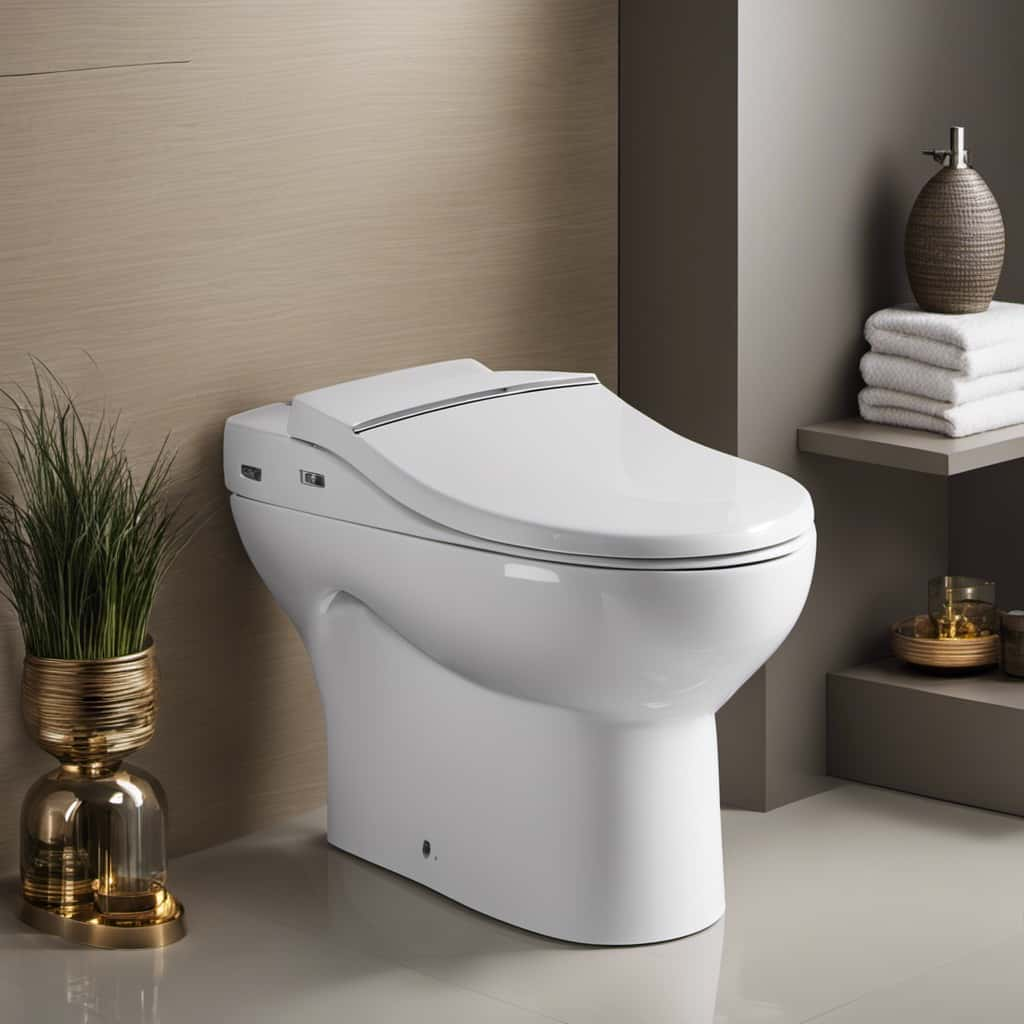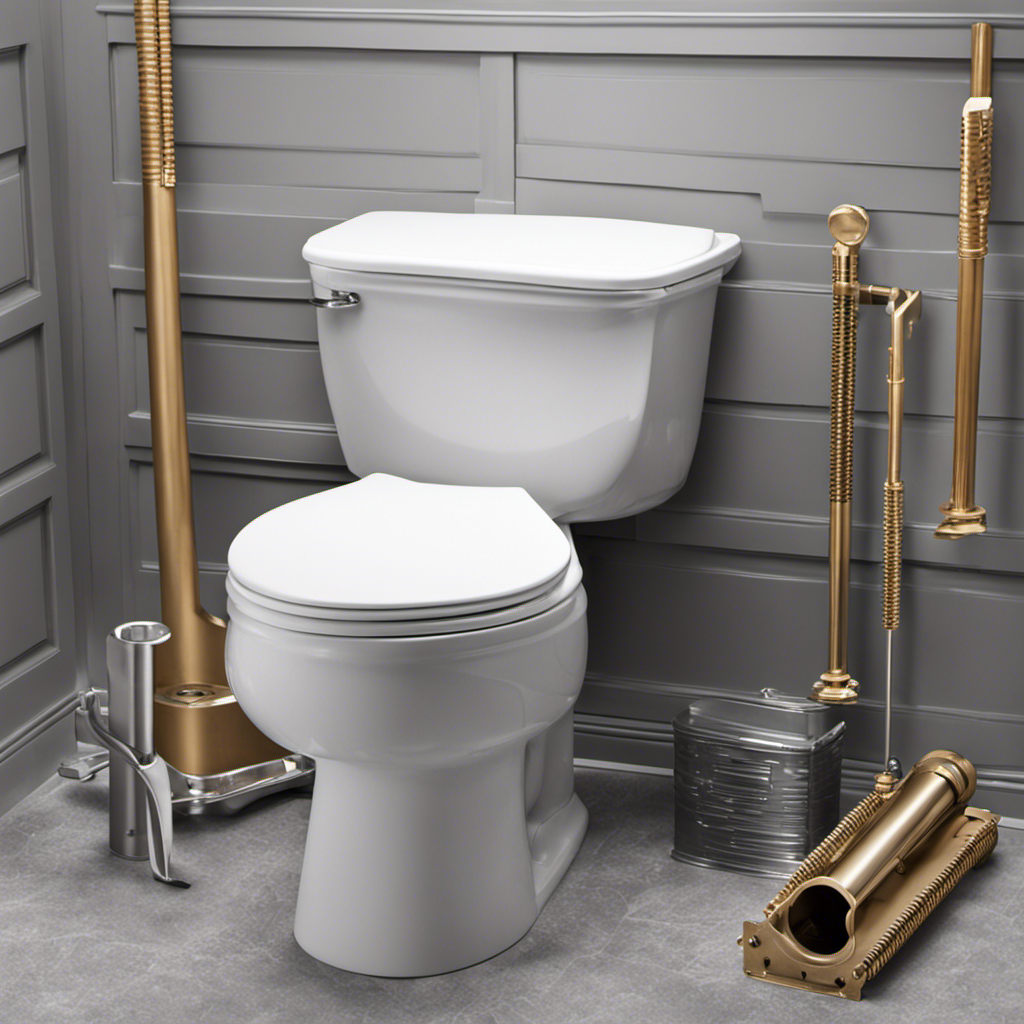Did you know that a slow toilet can waste up to 2,000 gallons of water per month? If you’re tired of waiting for your toilet to flush properly, you’ve come to the right place.
In this article, I will guide you through the steps to fix a slow toilet. We’ll start by identifying the cause of the problem, checking and adjusting the water level, and clearing any obstructions in the toilet bowl.
Then, we’ll examine and replace the flapper valve, and troubleshoot and repair the toilet flush mechanism.
Let’s get started and reclaim the efficiency of your toilet!
Key Takeaways
- Slow drainage after flushing with a bucket of water indicates a clog.
- Adjusting the water level in the toilet may help resolve the issue.
- Clear obstructions in the toilet bowl using a plunger or a toilet auger.
- Examine and replace the flapper valve if it is damaged or worn out.
Identifying the Cause of a Slow Toilet
Before you can fix a slow toilet, you need to determine what’s causing the issue. There are several common toilet problems that can lead to a slow-flushing toilet.
One of the most common causes is a clogged toilet. Signs of a clogged toilet include water backing up or rising to the brim when you flush, a gurgling sound coming from the toilet, or slow drainage. Another sign is if the water level in the bowl is lower than usual.
To confirm if you have a clogged toilet, try flushing with a bucket of water. If the water drains quickly, the issue may be with your toilet’s flushing mechanism. However, if the water still drains slowly, you likely have a clog that needs to be cleared.
Checking and Adjusting the Water Level
To ensure proper functioning, you should check and adjust the water level in your toilet. Maintaining the correct water level is crucial for optimal performance and preventing any issues with flushing.
Here are some steps to help you check and adjust the water level:
- Start by removing the toilet tank lid and locate the fill valve.
- Use a screwdriver to adjust the water level by turning the adjustment screw clockwise to increase the level, or counterclockwise to decrease it.
- Flush the toilet and observe the water level. Adjust as necessary to achieve the desired level.
If adjusting the water level doesn’t resolve the issue, you may need to consider other factors such as adjusting water pressure or replacing a faulty fill valve. Both of these can affect the water level and cause slow flushing.
It’s always a good idea to consult a professional if you’re unsure or if the problem persists.
Clearing Obstructions in the Toilet Bowl
Clearing obstructions in the toilet bowl can be done by using a plunger to create pressure and dislodge the blockage.
When it comes to toilet bowl maintenance, ensuring proper toilet water flow is crucial. If you notice that your toilet is draining slowly or not flushing properly, it is likely that there is an obstruction causing the issue.
To clear the blockage, start by positioning the plunger over the drain hole in the toilet bowl. Push down firmly and then pull up swiftly to create suction and dislodge the obstruction. Repeat this motion several times until the water starts to drain freely.
If the plunger doesn’t work, you may need to use a toilet auger to remove the blockage. Remember to always wear gloves and follow safety precautions when performing toilet bowl maintenance.
Examining and Replacing the Flapper Valve
When examining and replacing the flapper valve, it’s important to ensure that the water supply to the toilet is turned off. Here are the steps to troubleshoot leaks and understand toilet tank components:
- Start by turning off the water supply valve located behind the toilet.
- Flush the toilet to empty the tank completely.
- Locate the flapper valve, which is a rubber piece that seals the tank and allows water to flow into the bowl when flushed.
To examine the flapper valve, lift the tank lid and look for any signs of wear or damage. If you notice any cracks, warping, or debris buildup, it’s likely the cause of the slow toilet.
To replace the flapper valve, disconnect it from the flush valve chain and remove it from the tank. Take note of the make and model of your toilet to ensure you purchase the correct replacement flapper valve. Install the new valve by following the manufacturer’s instructions.
Troubleshooting and Repairing the Toilet Flush Mechanism
By understanding how the toilet flush mechanism works, you can troubleshoot and repair any issues that may arise.
When it comes to repairing leaks, the first step is to identify the source of the leak. Check the water supply line and the connections to the tank. If there are any leaks, tighten the connections or replace the faulty parts.
Another common issue is a constantly running toilet, which can be caused by a faulty flapper or an improperly adjusted float. If the flapper is not seating properly, it may need to be replaced. To adjust the float, locate the fill valve and turn the adjustment screw until the water stops running.
Conclusion
In conclusion, fixing a slow toilet doesn’t have to be a daunting task. By following the steps outlined in this article, you can easily identify and resolve the underlying issues causing the sluggishness.
Whether it’s adjusting the water level, clearing obstructions, or replacing the flapper valve, taking the time to troubleshoot and repair your toilet flush mechanism will ensure a smooth and efficient flushing experience.
So don’t let a slow toilet bring you down, dive in and fix it like a pro!










